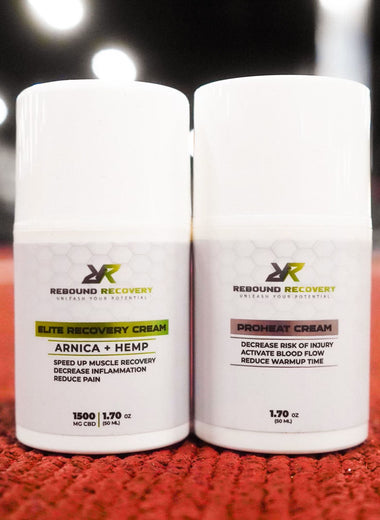Training breaks you down. Recovery is where you get better.
Every athlete knows recovery matters, but few treat it like the training variable it is. And even fewer have a clear plan. What most athletes end up with is a scattered mix of foam rolling, supplements, the occasional stretch, and a lot of hoping soreness goes away.
A real recovery routine doesn’t need to be complicated—but it does need to be consistent, intentional, and tailored to your training load.
Here’s how to build a recovery routine that keeps you healthy, progressing, and performing over the long haul.
Step 1: Match Your Recovery to Your Training Load
The harder you go, the more you need to recover. If you’re stacking double sessions, long runs, or heavy volume weeks, your body needs more than water and a nap.
Make recovery proportional to the demand:
-
High-volume weeks? Prioritize mobility, sleep, and nutrition daily.
-
Low-impact or taper phases? Use recovery to prep your body for upcoming stress.
Consistency is key—but so is adjusting your recovery based on output.
Step 2: Lock In the Big Three—Sleep, Nutrition, and Movement
No recovery tool or supplement can make up for gaps in your core habits.
Sleep: Aim for 7–9 hours per night. Sleep is where deep tissue repair and hormonal recovery happen.
Nutrition: Recovery meals should include carbs, protein, and anti-inflammatory foods like leafy greens, berries, or omega-3s.
Movement: Active recovery (like walking, yoga, or low-intensity cycling) promotes blood flow, reduces stiffness, and helps your nervous system unwind.
These are the foundation. Build around them.
Step 3: Choose Techniques You’ll Actually Use
A recovery plan only works if you do it regularly. If you don’t enjoy ice baths, don’t force it. If foam rolling feels like punishment, find other methods to release tension.
Some proven options:
-
Dynamic stretching
-
Mobility drills (hip openers, shoulder CARs, banded movement)
-
Sauna or heat therapy
-
Epsom salt baths
-
Breathwork or guided rest
The best recovery method is the one you’ll actually stick with.
Step 4: Target Problem Areas Before They Become Injuries
Know your body’s weak spots. If your Achilles always tightens up after long runs, it should be part of your post-run routine. If your shoulders get jammed after heavy lifts, that’s where mobility and soft tissue work need to focus.
Recovery isn’t just about fixing what hurts—it’s about staying ahead of what might.
Step 5: Treat Recovery Like a Training Block
The athletes who perform the longest are the ones who recover the best. That means scheduling recovery with the same mindset as your training:
-
Build in light recovery days
-
Schedule deload weeks
-
Track soreness, mobility, and sleep just like your workouts
-
Reassess every month based on how your body responds
Recovery isn’t passive. It’s strategic. The more you treat it like part of your plan, the better it’ll serve you.
The Bottom Line
You don’t need to be perfect—you need to be consistent. A real recovery routine is simple, intentional, and built around what your body needs to feel good and stay ready.
Train hard. Recover intentionally. Perform consistently.





